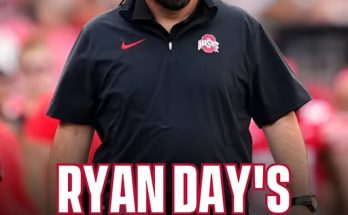LSU football has been among the most aggressive programs in the country when it comes to maximizing the transfer portal, and nowhere has that been more apparent this offseason than in the wide receiver room. Following the departure of elite talents like Malik Nabers and Brian Thomas Jr. to the NFL, LSU needed an immediate infusion of production, talent, and experience to avoid a drop-off in offensive potency. With head coach Brian Kelly and his staff under pressure to remain competitive in the SEC, the transfer portal became a crucial lifeline—and LSU delivered.
The Tigers brought in multiple wideouts with proven production at the collegiate level. While recruiting high school stars remains a foundational piece of any successful program, bringing in veteran receivers who already understand the speed, complexity, and physicality of the college game gives LSU a quicker path back to offensive consistency. The result is a revamped receiver corps that, on paper, looks poised to deliver over 2,000 yards of potential production based on previous performances.
One of the headliners of LSU’s transfer haul is CJ Daniels, who spent the previous four seasons at Liberty. Daniels isn’t just a depth piece—he’s a legitimate downfield threat who brings veteran leadership and polished skills to the table. In 2023 alone, he posted over 1,000 yards receiving and double-digit touchdowns while helping lead Liberty to an undefeated regular season. His career numbers are even more impressive: over 1,900 yards and 20+ touchdowns, proving he can be a consistent option against both mid-major and Power Five defenses. Daniels is known for his route-running precision and ability to track the ball on deep passes, making him a likely candidate to fill a similar role to what Brian Thomas Jr. occupied in LSU’s offense last season.
Another notable addition is Barion Brown, the electric playmaker from Kentucky. Brown might be the most dynamic receiver LSU added this offseason, bringing with him an explosive skill set that goes beyond just catching passes. As a return specialist, Brown has already racked up several career touchdowns and can flip the field in an instant. As a receiver, he has been remarkably consistent across his first two collegiate seasons. His freshman campaign was a breakout year, surpassing 600 receiving yards and showcasing elite separation ability. Brown brings elite speed, quick-twitch movement, and the ability to turn a five-yard hitch into a 70-yard touchdown. His yards-after-catch ability makes him a natural fit in LSU’s spread offense, especially with a new quarterback stepping in and likely leaning on quick passes early.
Nic Anderson is another significant piece in the puzzle. Though his career production is more limited due to injuries, the former Oklahoma Sooner showed flashes of brilliance during his redshirt freshman season. In that 2023 campaign, Anderson averaged over 20 yards per catch, a staggering number that reflects his deep-threat ability. His 10-touchdown season came despite relatively modest volume, highlighting his efficiency and nose for the end zone. At 6-foot-4 and 215 pounds, Anderson is a matchup nightmare—tall enough to go over the top of defenders, but fast enough to stretch the field vertically. If he can stay healthy, there’s little doubt Anderson will emerge as a go-to target for LSU this fall.
Beyond the headliners, LSU also secured commitments from a handful of other receivers who may not have gaudy numbers but offer depth, special teams value, or untapped upside. Whether it’s a former four-star recruit looking for a fresh start or an under-the-radar Group of Five player hoping to prove himself on the SEC stage, LSU made sure to build both the floor and the ceiling of the receiver room.
Combined, the trio of Daniels, Brown, and Anderson alone bring in well over 3,000 career receiving yards and nearly 40 touchdown receptions. That’s before even accounting for the scheme fit, expected usage increase, or development they’ll undergo in Baton Rouge. The tangible production is there, but so is the promise of more. These aren’t just bodies to fill out a depth chart; they’re proven playmakers who can elevate LSU’s offensive ceiling.
LSU’s decision to aggressively pursue receivers in the transfer portal reflects a broader trend in college football: winning now. With the portal, programs are no longer restricted to slow rebuilds. Instead, they can target exact positional needs and solve them with players who are ready to contribute immediately. In LSU’s case, the need was urgent. Malik Nabers and Brian Thomas Jr. combined for over 2,600 receiving yards and 31 touchdowns in 2023—replacing that kind of production internally would have been difficult, if not impossible.
In addition to on-field production, LSU also benefits from the leadership and maturity that experienced transfers tend to bring. Players like Daniels and Brown have played in high-stakes games, navigated adversity, and matured in the spotlight. That type of presence in the locker room is invaluable, particularly when grooming a new starting quarterback or teaching younger receivers the nuances of the game.
What’s especially promising is how these transfers complement each other. Daniels is a technician who wins with timing and body control. Brown is a burner who can score from anywhere on the field. Anderson is a physical specimen who dominates in contested-catch situations. Together, they form a balanced and versatile trio capable of attacking defenses in multiple ways. LSU offensive coordinator Joe Sloan now has a diverse toolbox at his disposal, which should allow for more creativity in play design and more flexibility in adapting to different game plans.
Another layer to consider is the competition this creates within the receiver room. LSU has a number of talented underclassmen who are pushing for playing time. Bringing in seasoned veterans will only elevate the standard in practice and push younger players to develop faster. Iron sharpens iron, and LSU now has one of the deepest and most experienced receiver rooms in the SEC.
It’s also worth noting how this receiver overhaul impacts LSU’s quarterback situation. Whether it’s Garrett Nussmeier or another contender emerging as the starting signal-caller, surrounding a new starter with experienced, productive receivers is one of the best ways to ensure a smooth transition. Knowing that his targets are reliable, explosive, and capable of making tough catches will give any quarterback added confidence in the pocket.
This isn’t just about numbers. This is about playmaking. Game-breaking ability. Leadership. Depth. LSU didn’t just add production through the transfer portal—they added experience, upside, and flexibility. Each transfer receiver brings something unique to the table, and when combined with LSU’s offensive system and culture, the potential is sky-high.
Of course, questions remain. Can Anderson stay healthy? Will Daniels adjust seamlessly to SEC competition after playing in Conference USA? Can Brown take another step as a route runner to become a more complete receiver? But those are the kinds of questions that come with any offseason additions. The fact that LSU has brought in this level of talent in one portal cycle is impressive in and of itself.
Ultimately, LSU’s additions through the transfer portal at wide receiver could prove to be the difference between a transitional year and a competitive one. While losing first-round talent always stings, the Tigers have positioned themselves to reload rather than rebuild. With over 3,000 yards of production coming in, and plenty of room for more, LSU’s receiving corps should once again be one of the SEC’s most dangerous groups. Whether it translates into wins on the field remains to be seen—but the foundation is in place, and the firepower is there.



